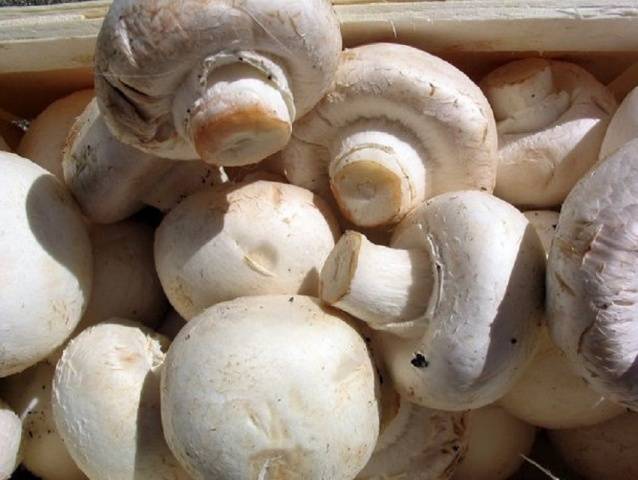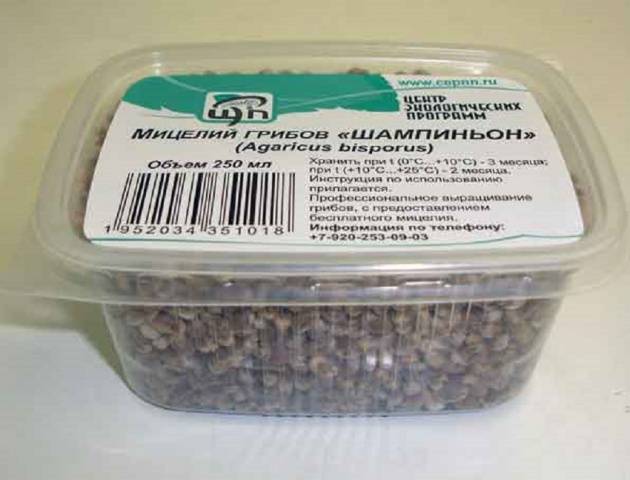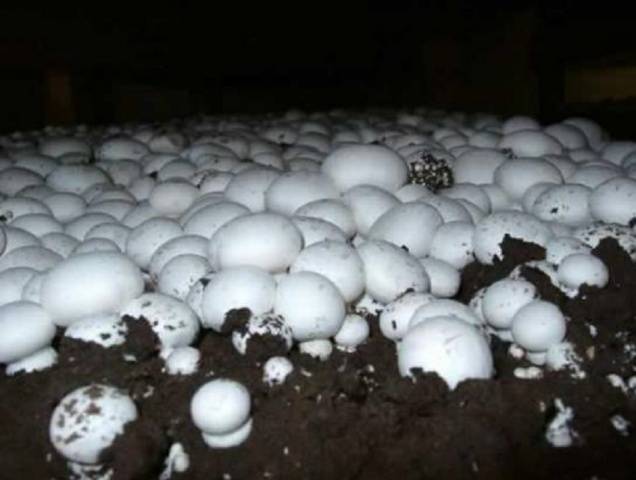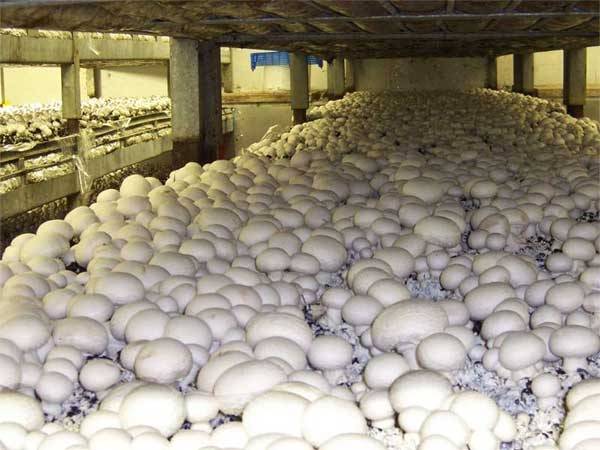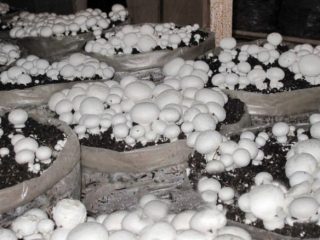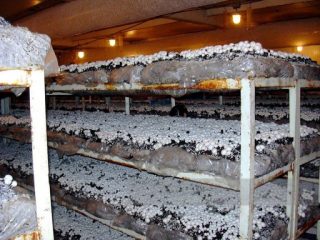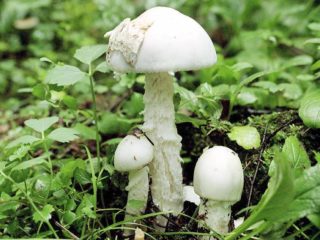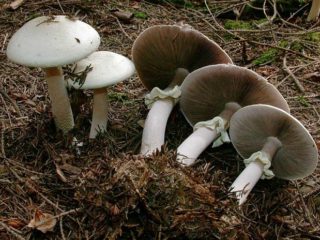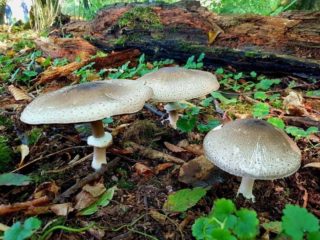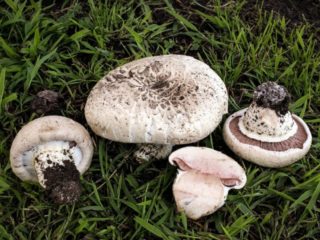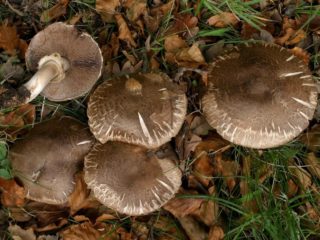Content
Growing mushrooms in the country is becoming an increasingly popular activity. In addition to the ecological purity of self-grown mushrooms, you can get a lot of pleasure from the harvest and great nutritional benefits. Typically, summer residents decide to grow champignons, considering them to be unpretentious and the most tender among mushrooms grown under artificial conditions. The yield of champignons is amazing. If you compare the number of vegetables and mushrooms obtained from one area, then you will collect 4 times more champignons. Growing champignons in the countryside is convenient and profitable.
The mushroom does not require active sunlight, so you can safely use shady spaces that are unsuitable for other crops. This species grows equally well in basements, greenhouses and open ground. The only factor that you need to pay close attention to is the substrate for growing champignons. How to grow champignons at the dacha yourself and without mistakes?
We study the process of growing in a summer cottage
Before starting a new activity, you need to remember that champignon mushrooms do not tolerate sunlight. To grow this type of mushroom you need good ventilation and humidity. Therefore, you will have to choose a place to plant mushrooms taking these nuances into account. We find a suitable site.Many summer residents grow their champignons in the circles of the orchard or simply in the vegetable garden. In the summer heat it is difficult to provide the necessary conditions for growing champignons. The fruiting bodies of mushrooms grow en masse in a narrow temperature range from +15°C to +18°C and a high percentage of humidity (90%). Therefore, you can count on a good harvest only before the heat sets in at the beginning of summer or after it subsides in the fall. But growing champignons at the dacha in a greenhouse allows you to collect mushrooms regardless of external weather conditions and at any time of the year.
In the selected area we place small trenches with the following parameters: length and width are 1 meter each, and depth is 30 cm. The dimensions are given for ridges planned in open ground. We fill the dug trenches with mullein or manure, but be sure to lay a layer of turf soil on top, then a substrate.
We are preparing a substrate or soil mixture for planting champignons in a summer cottage. Preparation takes a month to a month and a half.
- The most optimal composition for champignons is horse manure. In second place is cow straw. First, the manure is shaken with a pitchfork and then enriched with urea or ammonium sulfate in the proportion of 25 g of the substance per 10 kg of manure.
- The manure is kept in this composition for 10 days, shoveled again and chalk is added. Its amount is taken at the rate of 65 g per 10 kg of substrate. The mixed champignon mixture must be folded into a pile and compacted on the sides.
- The next time the composition is shoveled after 8 days, at the same time adding 10 g of superphosphate and 60 g of gypsum for every 10 kg.
- Now all that remains is to wait for the composition for the champignons to acquire a light brown tint and begin to disintegrate without emitting the smell of ammonia.The matured substrate is laid out very tightly on a dug-up bed 1.2 m wide.
The matured mushroom substrate is placed in trenches. This moment is the most convenient to provide champignons with protection from drafts. On the north side of the trench, it is good to reinforce glass to protect against the freezing wind. A canopy over the garden bed will be very useful, which will save the champignons from heavy rain and active sun. It can be made from ordinary plastic film. After preparing the bed, leave the substrate on it for a week, periodically compacting it.
Preparing mushrooms for planting
While the substrate is going through the ripening stage, let's start purchasing mushroom mycelium.
Mycelium can be purchased in specialized stores and communities of gardeners involved in growing champignons. The purchased material must be used strictly following the instructions.
It is difficult to determine the suitability of purchased raw materials, because they are stored exclusively in the cold. The best guide is the expiration date indicated on the packaging. At home, you also need to place the champignon mycelium in a room with a temperature no higher than +10°C. Only a couple of days before the intended planting, the packaging is taken out and transferred to a warm place (22°C).
If the mushroom spores are alive, then after 2 days the first signs of growth of the champignons in the package will appear:
- characteristic mushroom aroma;
- cobwebs on contents;
- increasing the humidity of the mycelium.
When the listed signs are absent, you can try to “revive” the mycelium.
It is transferred to a container, covered with a sheet of newspaper and moistened with a spray bottle, being careful not to wet the mycelium. The newspaper is kept damp all the time, and the container is placed in a warm place.This creates ideal humidity conditions for the fungus.
If after these procedures no signs of fungal life appear, then such mycelium is unsuitable for planting.
Another nuance - we prepare the soil mixture in advance to cover the mycelium. This stage takes 20-25 days. For the mixture, prepare 1 part each of sand and turf soil and twice as much peat (2 parts). Stir and leave until the mushrooms emerge.
Responsible moment - sowing mushrooms and harvesting
The bed is ready, the substrate is ready, the mycelium is checked for suitability, we begin planting. Place the mushroom spores at a depth of 5 cm. You will need to put 20 g of mycelium in each well. Sowing of champignons is carried out in a checkerboard pattern, the planting pattern is 20x20 cm. Immediately water the bed and cover it with paper, cloth or other available materials.
After 2-3 weeks, mycelium threads appear on the surface, cover them with a 4 cm thick layer of soil of a pre-prepared mixture, and remove the covering material.
If at this time very few threads (hyphae) of fungi appear, then the reason is insufficient moisture of the substrate or its temperature is lower than permissible. The substrate is moistened through a layer of paper and heated by compaction.
Now we have to wait at least 25 days before picking the first mushrooms. As soon as the diameter of the caps is 3-4 cm, you can harvest the first harvest.
The yield of champignons in the country is 5 kg per 1 sq. m beds. The fruiting process of champignons will last 2-3 months.
There is a way to grow champignons in the country without buying mycelium.
- You will need to find mature wild mushrooms and remove them from the soil with a twisting motion.
- Dig a trench in the area in advance and fill it with a mixture of manure and straw. The depth of the trench is 25 cm. Sprinkle everything on top with good garden soil.
- Finely chop the mushroom caps and place them on the surface of the substrate.
- On top is another layer of earth 3 cm thick.
In a month we will collect the first harvest of champignons. You can leave a few mushrooms for later planting.
Greenhouse growing method
To increase the duration of mushroom harvesting, many summer residents grow champignons in a greenhouse. With this growing method, it is important to ensure reliable control of humidity, lighting and temperature conditions in the greenhouse. The substrate for indoor soil also has its own requirements. Champignons grow well in soil:
- rich in nutrients;
- well drained and permeable to air and moisture;
- without excess carbon dioxide.
If it is possible to place the mycelium in forest soil, then this is great. Otherwise, you will need to add a small amount of sawdust to the soil. For planting, take mycelium or caps of mature mushrooms.
If you decide to grow champignons in a greenhouse in winter, then leave free space between the beds and the wall. This will guarantee that the mushrooms will not get too cold during the cold season.
Don't forget to ventilate the greenhouse! Champignons do not react well to heat.As soon as the first shoots of small champignons appear, you can move on from watering to spraying. It is carried out twice a day, and the beds are watered once a week from a garden watering can to prevent rotting of the roots. Be sure to monitor temperature, humidity and ventilation.
The first collection of champignons may not be that big, but in the future you will be able to collect a decent harvest of tender and tasty mushrooms. If you decide to start growing mushrooms at your dacha, then start with the preparatory stage in advance. Most of the time is spent on preparing the substrate, but caring for the beds is not difficult.
Useful video for summer residents:
